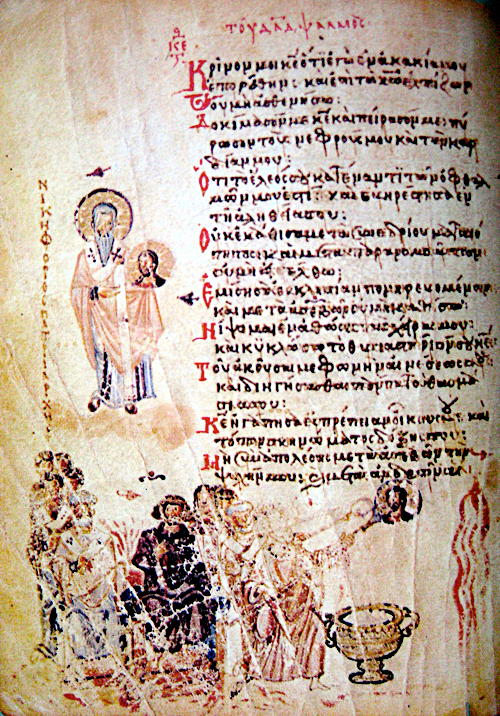
| ||||||
| Level 100 | ||||||
|
| ||||||
| Level 200 | ||||||
|
| ||||||
| Level 300 | ||||||
|
| ||||||
| Level 400 | ||||||
|
| ||||||
| Level 500 | ||||||
|
| ||||||
| Level 600 | ||||||
| ||||||
| Level 700 | ||||||
|
| ||||||
| Level 800 | ||||||
|
| ||||||
| History of Art | ||||||
| LS&A | ||||||
| University of Michigan | ||||||
| Back to the list of courses |
Special Topics in History of Art: Iconoclasm And Its Discontents, Or, How The Byzantines Learned To Stop Worrying And Love The Icon

In the 8th and 9th centuries, Byzantium witnessed a violent conflict over the validity of holy images. This battle led to the re-evaluation of fundamental concepts for the medieval and early modern worlds and included issues such as the powers and limits of icons versus relics, of words vis-à-vis images, and of sight in relation to the other senses. This course explores the conceptual and practical consequences of Byzantine iconoclasm. The modes of punishment meted out to individuals and to images, the debates staged between iconophiles and iconoclasts, and the juridical trials of icons, shall be closely examined. Along with the powerful contestation over holy images, we shall also look at the valence of pagan sculpture, automata, and fountains, all of which played a vital role in the public spaces of Constantinople and were implicated in the conflict. We shall consider the forms that medieval contestation took, and the competing technologies of knowledge employed to legitimize arguments. Finally, we shall consider the ways in which 'absent' images (such as those wholly destroyed or partially defaced) play their part in an art historical discourse that usually privileges the whole, and which equates the 'visual' with what is literally visible. Primary sources (all translated) shall comprise an integral part of the course. There will be visits to Special Collections and the Kelsey Museum. Each session will include student participation in the form of discussion. The course will culminate in a 17-20 page research paper, to be presented in the form of a conference talk (15-20 minutes) prior to its final submission.
Estimated Cost of Materials: 0-50$
Textbook/Other Materials: No books need be purchased. The readings shall be scanned and put online on CTools. Some readings shall be put on reserve in the Fine Arts Library.